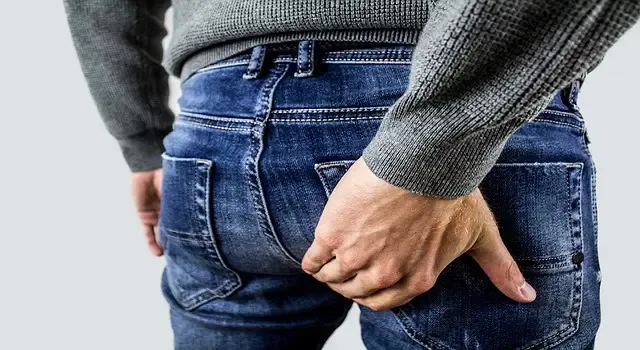Hemorrhoids: Causes, Treatment, & Prevention
Swollen veins in the anus and rectum! It's hemorrhoids. What are the causes of hemorrhoids What are her symptoms How are hemorrhoids diagnosed and treated Continue reading:
What are Hemorrhoids
Hemorrhoids or piles are a
group of veins that resemble varicose veins, located under the mucous membranes
lining the lower part of the rectum (internal hemorrhoids), and under the skin
around the anus (external hemorrhoids).
According to Harvard Medical School,
blood vessels constantly fight gravity to return blood to the heart, and people
get hemorrhoids as a result of us being upright beings standing against
gravity.
According to the Johns Hopkins
University School of Medicine, hemorrhoids occur when there is additional
pressure on these veins. They are common in both men and women, since about
half of people will have hemorrhoids by the age of fifty, the causes of which
are often unknown.
Types of Hemorrhoids
There are two types of
hemorrhoids, internal hemorrhoids that occur below the rectum, and external
hemorrhoids that appear under the skin around the anus:
1. External
hemorrhoids
With this type of hemorrhoid,
the skin covering it becomes irritated and eroded, and therefore it is
considered the most unpleasant. In addition:
- Sudden and severe pains if a blood clot forms inside it.
- The appearance of a lump around the anus.
- The clot usually dissolves ،
2. Internal
hemorrhoids
Internal hemorrhoids do not
produce any pain, even if bleeding appears. But it may be accompanied by the
following symptoms:
- Red blood may notice on toilet paper or in the toilet bowl.
- Internal hemorrhoids droop or stretch out beyond the anus.
- Collection of small amounts of mucus and small stool particles due to prolapse causing irritation called anal itching.
Symptoms of Hemorrhoids
The symptoms of hemorrhoids are unpleasant, but they improve on their own after a few days. The following are the most prominent of these symptoms:
- Pain and irritation around the anus.
- Severe itching.
- Swelling or the appearance of a hard lump around the anus
- Bleeding (bleeding can be caused by something other than hemorrhoids and should be evaluated).
- Black feces.
Generally, see a doctor if the
normal symptoms of hemorrhoids do not improve within one week of home remedies.
Causes of Hemorrhoids
The main cause of hemorrhoids
is severe pressure on the veins around the anus. Know other possible causes of
hemorrhoids:
- Make an effort during
defecation.
- Sit for a long time in the
toilet.
- Chronic constipation.
Risk factors
In addition to the possible causes of hemorrhoids there are contributing risk factors:
- Diet: includes eating low-fiber foods.
- Lifting heavy objects.
- Anal intercourse.
- Genetics.
- Pregnancy: hormones during this period cause the veins to relax and swell, in addition to the weakness of the rectal tissues.
- Age: hemorrhoids are more common among adults over 50 years of age.
Complications of Hemorrhoids
In rare cases, there may be complications of hemorrhoids, such complications include:
- Low blood count that makes you tired (anemia): in rare cases hemorrhoids may cause bleeding, leading to anemia.
- Strangulated hemorrhoid: occurs when the blood supply to the internal hemorrhoid is interrupted, it chokes, causing severe pain.
- Clot in hemorrhoid( thrombosed hemorrhoid): it is not dangerous, but it is very painful, and to manage the condition, it must be pricked and drained.
Diagnosis of Hemorrhoids
Hemorrhoids are usually
diagnosed by getting to know your medical history and having a physical
examination.
To ascertain your condition, whether is it hemorrhoids or one of the digestive disorders, such as colorectal cancer, your doctor may direct you to do the following tests:
- Physical examination: looking for swollen blood vessels in the anus and rectum, which are considered a sign of hemorrhoids.
- Digital rectal examination (DRE): in this examination, the doctor inserts his finger into the rectum to check for any problems.
- Anoscopy of the anus and rectum: to see the internal hemorrhoids, a lighted hollow tube is inserted into the anus, which makes it possible to see the rectum as well.
- Sigmoidoscopy: a short, flexible, lighted tube is inserted into the intestine through the rectum, to find out the causes of diarrhea, abdominal pain, constipation, abnormal growth, and bleeding.
- Colonoscopy: helps check for any abnormal growths, red or swollen tissue, ulcers, or bleeding. It allows us to see the lining of the colon and take a tissue sample for testing.
Treatment of Hemorrhoids
The hemorrhoid treatment plan
involves, taking into account several factors, among which the patient's age
and general health, and how difficult his symptoms are. The following are the
most prominent methods of treatment:
Medical treatments
- Creams, ointments, or suppositories are available without a prescription, to treat the sensation of discomfort.
- Stool softeners.
- Fiber supplements.
- Rubber band ligation: to cut off blood circulation and the hemorrhoid shrinks and then
disappears, an elastic band is placed around the base of hemorrhoid inside the
rectum.
- Sclerotherapy: to shrink hemorrhoids, a chemical solution is injected around the blood
vessels.
- Electrocoagulation: infrared radiation is used to burn hemorrhoidal tissue.
- Hemorrhoidectomy: it is when the hemorrhoids are permanently removed.
Home remedies
If your condition is not complicated, you can make do with home remedies to manage your symptoms:
- Sit inside a tub of warm water several times a day.
- Use ice packs to reduce swelling.
- Add more fiber and fluids to your diet to soften the stool and reduce the pressure on hemorrhoids.
Prevention of Hemorrhoids
Prevention of hemorrhoids is considered almost impossible. However, following the following directions may be helpful:
- Follow a healthy diet, rich in fiber and fluids to help form a mass in the intestines, softening the stool, and facilitating its passage (wholemeal flour, oatmeal, bran, brown rice, carrots, pears).
- Maintain a healthy weight.
- Doing sports.
- Take at least eight glasses of water or other liquids a day.
- Go to the bathroom as soon as you feel the urge to defecate, to avoid losing the need for it, which can lead to dry stool and difficulty passing.
- Avoid prolonged sitting on the toilet, as this can increase the pressure on the veins of the anus.
Finally, if you suffer from hemorrhoids you can reduce symptoms and heal gradually if you follow the appropriate treatment, maintain a routine of exercise, and avoid sitting for long periods. Share the article and share your opinion with us!



.webp)


